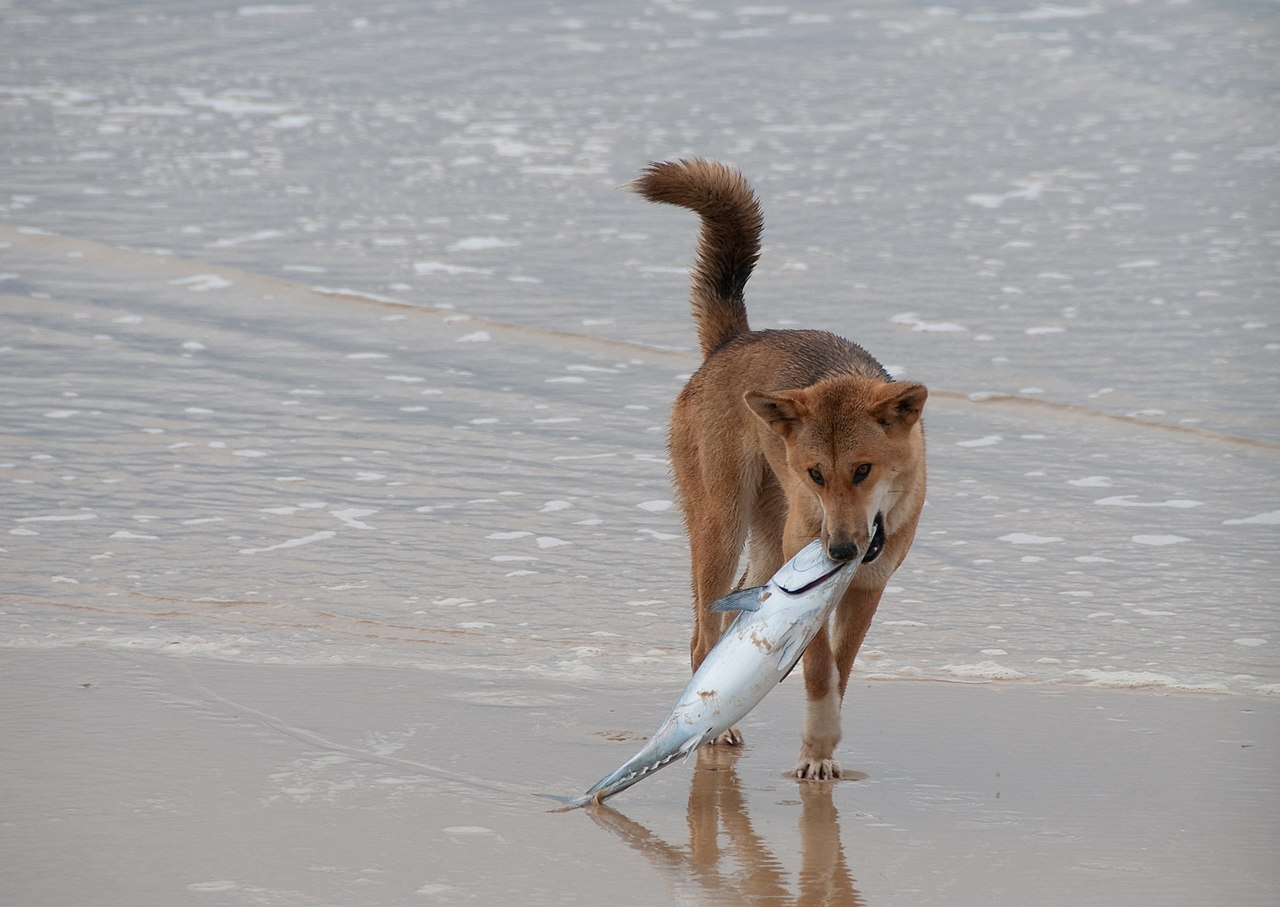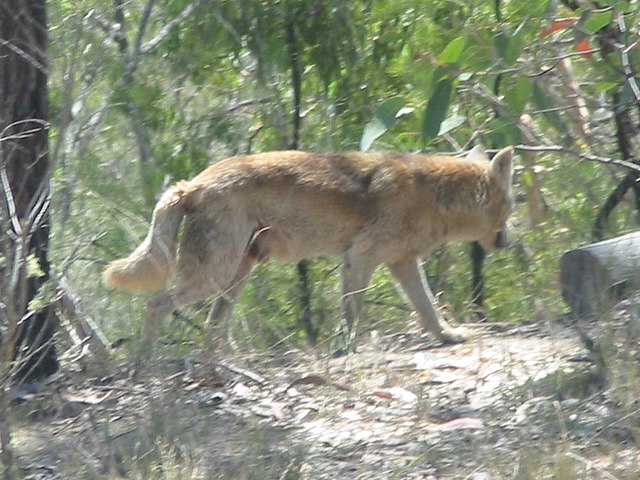
The dingo is an ancient (basal) lineage of dog found in Australia. Its taxonomic classification is debated as indicated by the variety of scientific names presently applied in different publications. It is variously considered a form of domestic dog not warranting recognition as a subspecies, a subspecies of dog or wolf, or a full species in its own right.
Dingoes are native to Australia and are commonly found in deserts, grasslands, and forests.
The dingo is a wild dog found primarily in Australia. It is known for its adaptability to different environments, from deserts to forests. While often seen as a wild animal, dingoes have a social structure similar to that of domestic dogs.



Dingo on the beach at K'gari, Queensland

Portrait of a Large Dog from New Holland by George Stubbs, 1772. National Maritime Museum, Greenwich.
!["Dog of New South Wales" illustrated in The Voyage of Governor Phillip to Botany Bay in 1788[14]](https://upload.wikimedia.org/wikipedia/commons/thumb/1/12/Dog_of_New_South_Wales.jpg/640px-Dog_of_New_South_Wales.jpg)
"Dog of New South Wales" illustrated in The Voyage of Governor Phillip to Botany Bay in 1788[14]
![The Sahul Shelf and the Sunda Shelf during the past 12,000 years: Tasmania separated from the mainland 12,000 YBP,[33] and New Guinea separated from the mainland 6,500[34]–8,500 YBP.[34][35]](https://upload.wikimedia.org/wikipedia/commons/thumb/5/5f/Map_of_Sunda_and_Sahul.png/960px-Map_of_Sunda_and_Sahul.png)
The Sahul Shelf and the Sunda Shelf during the past 12,000 years: Tasmania separated from the mainland 12,000 YBP,[33] and New Guinea separated from the mainland 6,500[34]–8,500 YBP.[34][35]

Skeleton





Dingo with a fish on K'gari (Fraser Island)

Dingo on the Nullarbor Plain

Dingo pups

A male dingo with his pups

Dingo, Fraser Island, Queensland

Dingoes are sometimes kept as pets, although their tendencies as wild animals are difficult to suppress.
![Distribution of wild dogs and livestock[58]](https://upload.wikimedia.org/wikipedia/commons/thumb/9/9a/Wild_dog_distribution_2.png/640px-Wild_dog_distribution_2.png)
Distribution of wild dogs and livestock[58]

Dingo in a Maryland zoo

A part of the dingo fence

Warning of poisonous sodium fluoroacetate baits

Female dingo with a tagged ear on Fraser Island
![Broad distribution map of dingoes and dingo–dog hybrids showing percent purity[144]](https://upload.wikimedia.org/wikipedia/commons/thumb/3/38/Dingo_and_hybrid_distribution.jpg/640px-Dingo_and_hybrid_distribution.jpg)
Broad distribution map of dingoes and dingo–dog hybrids showing percent purity[144]

Wild dog with atypical colouration, possibly a hybrid
Trainability
Responsiveness to training: —/5